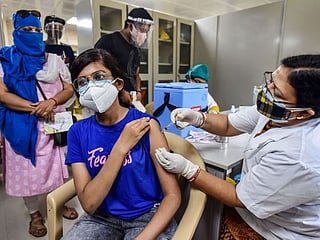India must acknowledge the scale of its COVID-19 crisis
Country’s political leadership needs to rise up to the grave challenge facing the nation

India continues to struggle with it’s COVID emergency. The number of daily deaths have hit new records. There are well over four lakh known cases every day and hospitals are overwhelmed.
The Indian Express reports that “compared with the first peak in September last year, the number of cases in India’s hinterland or backward regions has quadrupled, and so has the number of the dead”.
And this is only official data. We don’t even know how many cases are going unreported, and how many deaths are being kept out of the official COVID count.
A scathing piece published this week in The Lancet says “The Institute for Health Metrics and Evaluation estimates that India will see a staggering 1 million deaths from COVID-19 by Aug 1. If that outcome were to happen, Modi’s Government would be responsible for presiding over a self-inflicted national catastrophe.”
A massive setback
We all know what went wrong. The government got complacent, declared a premature victory over COVID, allowed super spreader events like election rallies and the Kumbh to take place and basically took its eye off the ball.
After bragging about being the pharmacy of the world, and exporting vaccines around the world, India’s vaccine programme has faced a massive setback.
As per the government’s own data, vaccination levels have crashed by more than 50% in the first week of May from a month earlier, while the vaccine drive has been opened up to everyone above the age of 18.
Except there is a massive shortage and now even Adar Poonawala’s Serum Institute admits Covishield vaccines may take months to get to Indian hospitals. As of May 2, only 2 per cent of India’s population has got both doses of the vaccines. Just over 9% of the population has received one dose.
So the question is — what does India need to do now? Experts say the key is honesty and transparency by the government and that begins with first truthfully acknowledging the scale of the crisis. Lowering case numbers artificially by testing less or hiding COVID deaths, will only be counterproductive.
That is why, as The Lancet also rightly says, the government needs to own up to its mistakes. It doesn’t inspire much confidence that even now, the government is obsessed with image management and perceptions, more than ground realities.
Government's flip-flop
Just days ago, the principal scientific adviser to the government, Prof K Vijay Raghavan had said a third wave was inevitable and India needed to be prepared. Two days later, he recalibrated that to say that a third wave may not happen if all precautions are taken.
What are we supposed to believe? Doctors have warned of possible future waves, and for once a top government adviser admitted it only to reign it in 48 hours later.
Other cities need to learn from Mumbai’s success in flattening the curve. Mumbai’s daily positivity rate dropped from a high of 20.8 per cent in the beginning of April to 9.9 per cent by the end of April. Experts say a timely lockdown, aggressive testing and an effective triaging system are behind this.
Municipal officials have also said the fact that they did not dismantle large COVID centres set up last year after the first wave, also helped. This allowed them to restart the facilities in a short span of time and quickly add beds.
Compare that to Delhi, which resisted a quick lockdown, and dismantled a thousand bed DRDO facility when there was a lull in cases. They were scrambling to restart it after the new peak.
Doctors say a national lockdown should remain on the table, which is the only way that countries like the UK also managed to turn things around. Ramping up vaccine production, importing vaccines urgently and involving local and primary health care centres in the vaccination drive is another important suggestion coming from medical professionals.
New mutant variants
Genome sequencing needs to be stepped up so that we have a better understanding of the new mutant variants. Most of all, the messaging from the government has to be clear — that masking, social distancing are critical to the success of fighting back against the virus.
All of this can work if the government admits this is a national health emergency, instead of going after those who criticise them and worrying about their image.
It is beyond shameful that the UP government, for example, is busy registering police cases against those who have openly spoken of oxygen shortages, even hospitals. It won’t be easy, but this is a battle that can be won. For that, the leadership needs to lead. Will it rise up to that challenge?
Sign up for the Daily Briefing
Get the latest news and updates straight to your inbox









